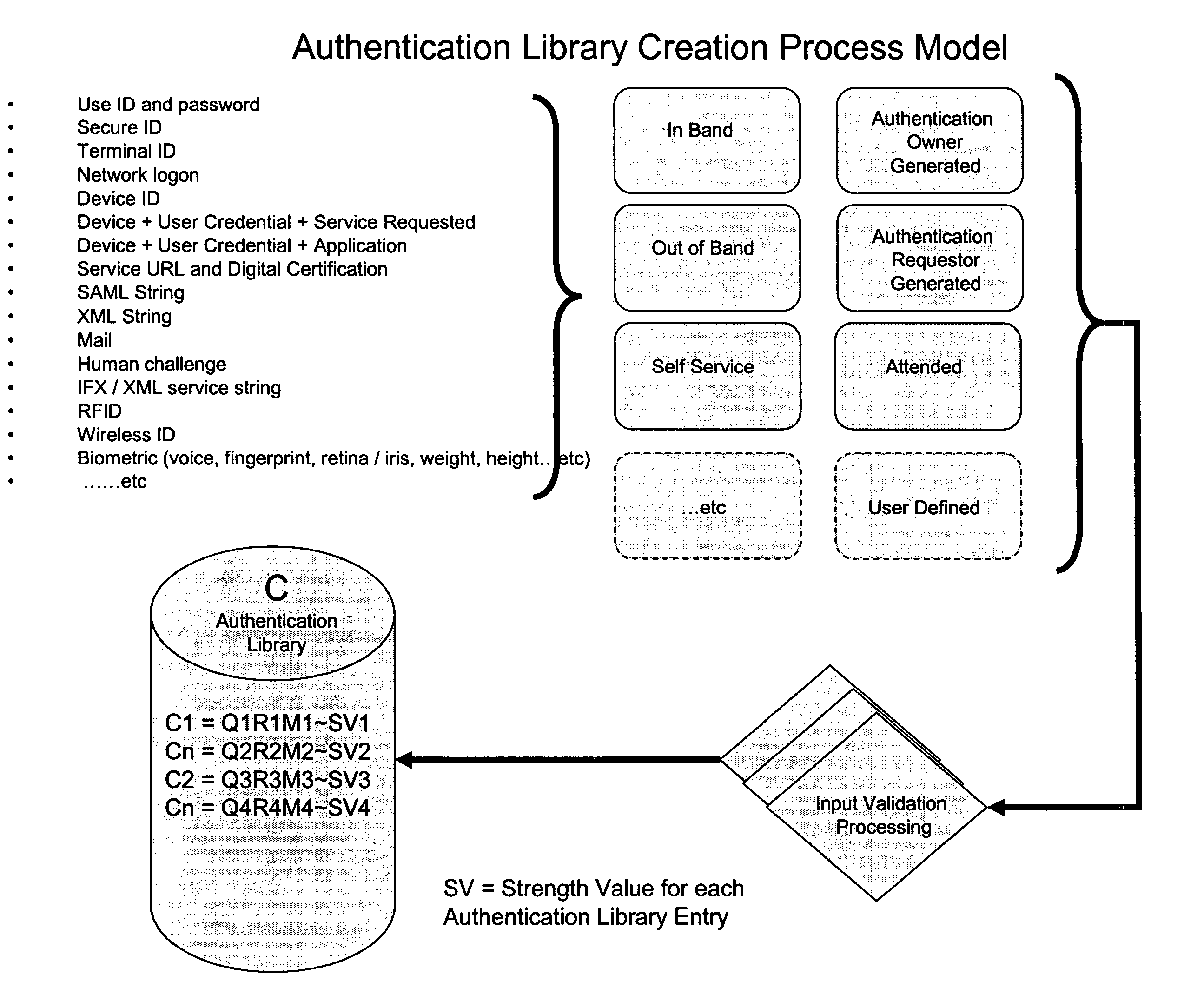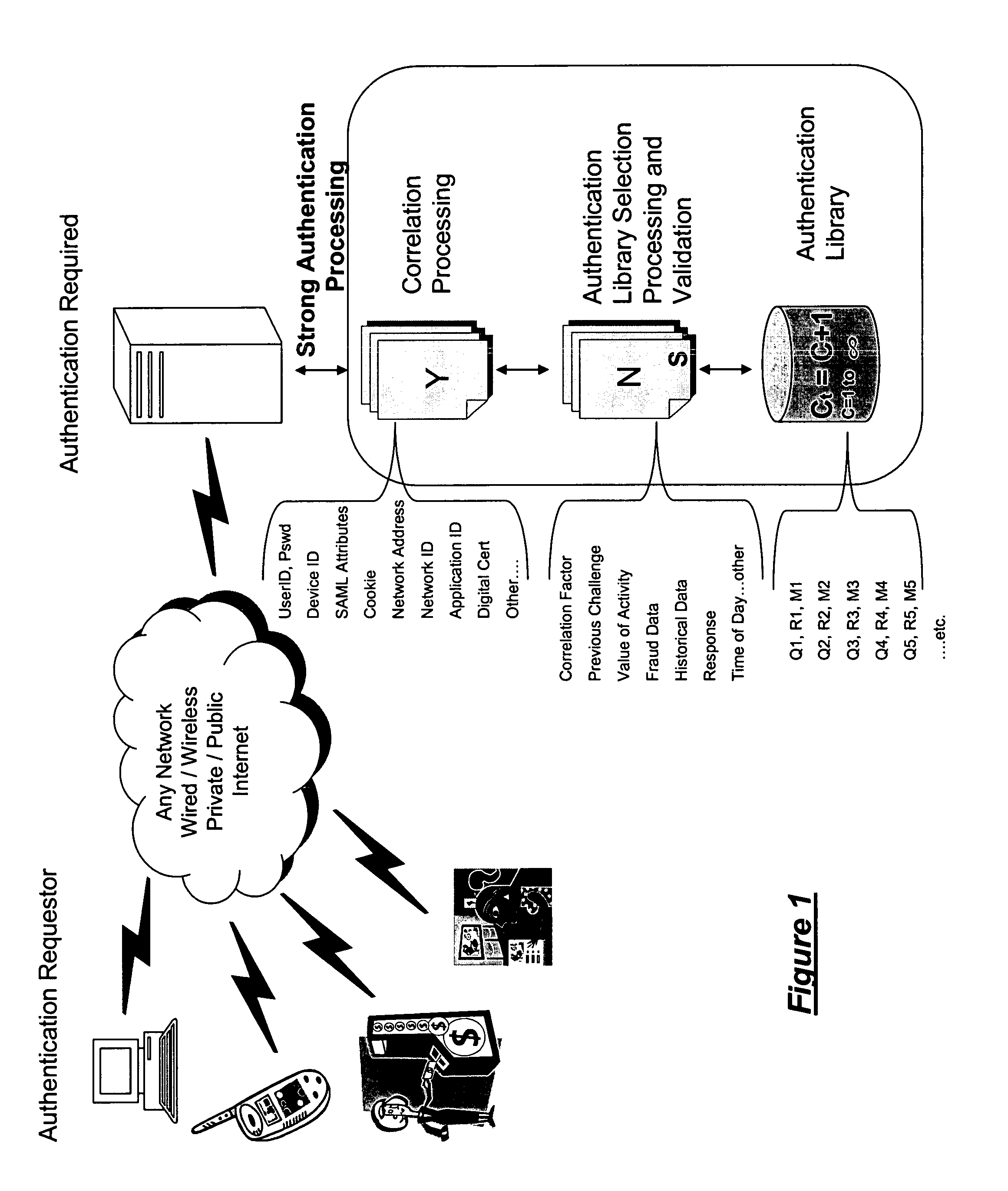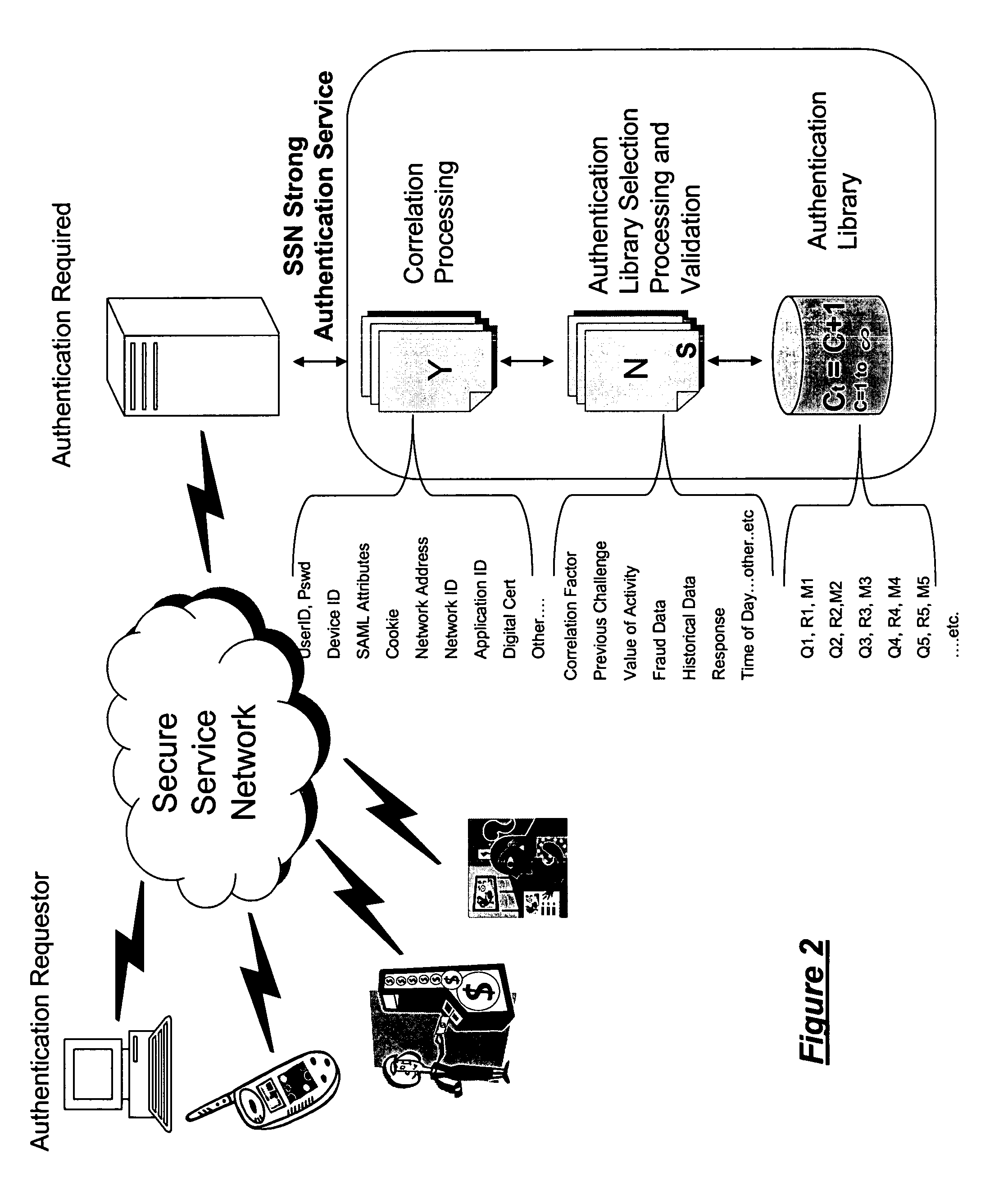Common authentication service for network connected applications, devices, users, and web services
a network connected, authentication service technology, applied in the field of secure commerce, can solve the problems of inability to meet the needs of users, many approaches to strong authentication are intrusive to users, and expensive to implement and manage, and achieve the effects of reducing threat, cost, laborious, and limited in their ability to
- Summary
- Abstract
- Description
- Claims
- Application Information
AI Technical Summary
Benefits of technology
Problems solved by technology
Method used
Image
Examples
example 1
[0052]With reference to the drawing figures, FIG. 1 shows the system of the invention in which the authentication function is provided as a mechanism to support strong authentication to a self service device connected to an application or function over a network or network community. Traditional self service devices include the ATM, kiosk, cell phone, and laptop or desktop computers in a wired or wireless mode. The network may be wired, wireless or any mix of both including private and public networks including the internet. In the figure the user or combination of user and device provided information is presented by the device to the application requiring authentication. The device sends the request for authentication over the network to a system connected to the network that requires authentication. The information provided is used to identify one or more indices for establishing correlation processing (Y). Correlation processing is used to define one or more indices for Authentic...
example 2
[0054]FIG. 2 shows the system of the invention in which an authentication service is provided as a mechanism to support strong authentication to participants on an SSN implementation or Service Oriented Network. Self service and attended devices are connected to a service network. The service network may use the system of the invention for device and user authentication. Traditional self service devices include the ATM, kiosk, cell phone, and laptop or desktop computers. The network may be wired, wireless or any mix of both including private and public networks including the internet. In the figure the user or combination of user and device provided information is presented by the device to the authentication service. The device sends the request for authentication over the network to a system connected to the network that includes or can be associated to the authentication service. The information provided is used to identify one or more indices for establishing correlation process...
example 3
[0058]FIG. 3 shows the solution of the invention being used as a strong authentication mechanism for devices that require stand alone authentication. This may include local credential stores in devices or applications as well as access control to local application or certificate repositories on a device or application. This can be accomplished for local authentication as well as networked authentication. In one implementation a networked CAS can be used to authenticate access to the local repository residing on the local machine, device, key fob, cell phone, or token. In this manner the networked CAS is available to manage authentication for local or device specific access where no other network access is needed.
PUM
 Login to View More
Login to View More Abstract
Description
Claims
Application Information
 Login to View More
Login to View More - R&D
- Intellectual Property
- Life Sciences
- Materials
- Tech Scout
- Unparalleled Data Quality
- Higher Quality Content
- 60% Fewer Hallucinations
Browse by: Latest US Patents, China's latest patents, Technical Efficacy Thesaurus, Application Domain, Technology Topic, Popular Technical Reports.
© 2025 PatSnap. All rights reserved.Legal|Privacy policy|Modern Slavery Act Transparency Statement|Sitemap|About US| Contact US: help@patsnap.com



